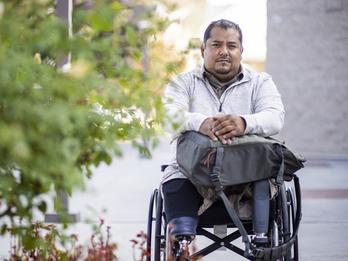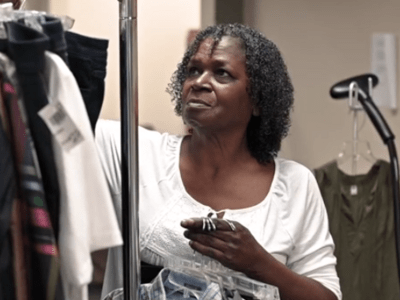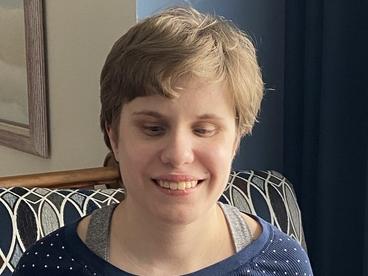
Jet Speed on Accessible Air Travel
Major airlines in the United States break or destroy 31 wheelchairs every single day. Join Easterseals in helping make sure planes connect everyone to family and friends, to opportunity, and to possibilities.
Test transcript text. Lorem ipsum dolor sit amet, consectetur adipiscing elit. Ut eget bibendum ante, nec aliquam nunc. Fusce dapibus consequat ex, et cursus orci ultricies eget. Nullam condimentum libero sed nisi pretium, eu mattis mauris auctor.
Nunc sit amet commodo justo. Ut placerat purus sed mi sodales tristique. Nunc a commodo augue. Quisque venenatis nisl eget semper placerat. In aliquam turpis sit amet commodo accumsan.

Easterseals: Air travel is exempted from ADA protections. Despite the Air Carrier Access Act, our air travel system has not done enough to ensure Americans with disabilities have safe, efficient, & reliable travel options. https://hq.easterseals.com/jetspeed #AccessibleAirTravel

Easterseals: Airlines are alone in requiring passengers to abandon their wheelchairs. You can stay in your wheelchair on a bus, train, or ship. It should be no different for airplanes. https://hq.easterseals.com/jetspeed #AccessibleAirTravel

Easterseals leads in improving accessible transportation, solving mobility challenges, and promoting equity. We connect people with their communities. Learn more!
More Like This
-

The Refrigerator Lesson: Experiential Learning And Disability Acceptance
Shoshana was just trying to buy a fridge—until a simple moment turned into an unexpected lesson in empathy, perspective, and being seen. -

What is Medicaid, and Why Does It Matter?
Medicaid provides essential healthcare for millions, but is often misunderstood. Let’s break down why it matters and how it helps people with disabilities. -

Mature Workers: Hire for the Attitude, Train for the Skill
The Senior Community Service Employment Program (SCSEP) at Easterseals helps job seekers aged 55+ build skills and find employment through federal funding. -

Just Ask: Advocacy and Interacting with Disabled People
Being blind since birth, I’ve learned to advocate for accessibility. The key? Ask and educate—because respect starts with understanding.
Sign up for Emails from Easterseals
Get exciting news, helpful resources, & inspiring stories delivered to your inbox each month.

